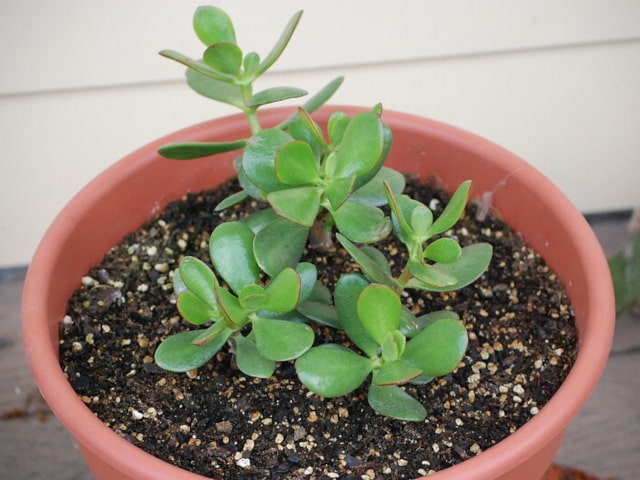
Jade plants are great house plants you can grow without much trouble. While they do require some specific care most people can easily learn how to grow them. A great thing about Jade plant succulents is that they don't require much input from us: they can easily grow on their own.
However, just like other house plants, Jade plat succulents do need some help here and there. This is particularly true for those that are grown indoors. One of the most important things you need to know is how to propagate Jade plants.
Propagating Jade Plants
Jade plant succulents are not difficult to propagate but you need to be very gentle. The good news is that even beginners can do it - it is relatively easy to learn all the necessary skills needed for propagating Jade plants.
The main method of propagation for Jade plants are cuttings. There are two main types of cuttings you can get: stem and leaf cuttings. Both will work so it's often down to preference or what kind of cuttings are available to you.
However, keep in mind that leaf cuttings will typically take much longer to grow into a Jade plant. On the other hand, leaf cuttings are much easier to work with. Think about this when deciding on the type of cuttings for your Jade plant.
When working, make sure to use only clean, sterile equipment. This will prevent numerous problems, such as fungus, insects and mold. You need to give your Jade plant a clean start without associated issues.
Tools and Materials
If you wish to propagate Jade plants, you will need certain tools and materials:
- Sharp, sterile knife (alternatively, scissors)
- A pot or a container
- Soil (it's best to use succulent or cactus soil)
- Parent plant
- Rooting hormone (you can use either powder or liquid)
- Paper towels
- Chopstick or a straw (you may need two of them)
- Plastic bag (sandwich bags work great for this)
Also, make sure to have enough space to work. This can get a bit messy and you need to be able to work freely.
Propagating Jade Plants with Cuttings
Here are the steps you need to take to propagate your Jade plant:
- Prepare the container you wish to use for your new Jade plant. Place soil into it and water it. Make sure it has time to drain. In case you wish to allow cuttings to callous you can skip this step.
- Find a good branch on your Jade plant that you wish to use.
- Use a knife or scissors to gently cut the branch. Make sure to cut as close to a node as possible. You will recognize nodes easily: those are thicker sections on the stem that allow for growth of new stems and leaves. The cutting should be about 3 to 4 inches long.
- Remove leaves from the bottom inch of the cutting. This will go into the soil so it has to be free of leaves.
- Dry the cutting. Simply place it to a dry place and leave it there for about 2 to 3 days. Alternatively, you may wait until the cuts on the stem and leaves callous over.
- Take rooting hormone and apply it on the bottom. In case you wish to use powder rooting hormone you may need to moisten the bottom of the stem so it sticks. Apply rooting hormone on the whole bottom inch of the cutting.
- Make an inch deep hole in the soil. The soil has to be pre-moistened but drained. You may use a chopstick or a pencil to make the hole.
- Gently place the cutting into the hole. Make sure not to remove much of the rooting hormone while doing this - rooting hormone is important for the success (technically, you may do without it but it does promote root growth and it helps your cutting be strong and healthy while growing into the new plant).
- Once the cutting is in the hole, carefully press the dirt around the cutting. It should stand on its own in the soil. In case this doesn't happen, insert a chopstick or a straw next to it to support it.
- Place a plastic bag over the top of the cutting. It should not cover the whole cutting so you may use additional chopstick or a straw to support the bag. This is needed to prevent the loss of moisture.
Once you are done make sure to place your cutting in a warm and shaded area. Observe the cutting as it grows. In case condensation appears on the bag, remove it.
The cutting should form roots in about 3-4 weeks. After this period, you can start gradually moving the cutting closer to the window and out of the shade. However, make sure not to place the cutting on the windowsill. It is very important to build its tolerance gradually. You should move it a bit week by week. This is important to prevent sunburn and other problems.
Propagating Jade Plants with Leaves
Technically, leaves are also considered cuttings, though this form of propagation is usually called "propagation with leaves" while the one with stems is considered propagation with cuttings.
Propagation with leaves is easier than the one using cuttings. The leaves of this plant grow quickly and tend to be very strong, so this is a successful form of propagation ideal for those who are not ready to try propagation with cuttings just yet. However, keep in mind that this method takes a longer time to grow a new Jade plant.
Here are steps you need to take to propagate Jade plant with leaves:
- To propagate your Jade plant succulent with leaves, you need to remove healthy, strong leaves from the plant. It is best to cut them carefully with a sharp, sterile knife or scissors.
- Once you have leaves, you need to let them dry and callous over. It means that they need to dry until the cuts on them are fully dried.
- When the leaves are ready, apply some rooting hormone to the cut area of the leaf. This will increase the chances of rooting.
- Place the leaves on the moist soil and wait. They should root and start a new plant. However, this takes time so you need to be patient.
The root growth of a new Jade plant is stimulated by dry conditions. This is the same with an established Jade plant but it becomes important for propagating. It means that the roots will grow in all directions to seek moisture and secure the plant to the soil in the process. This will make the plant well established into the soil and prevents the plant from falling over.
Photo credit: Ellen Macdonald
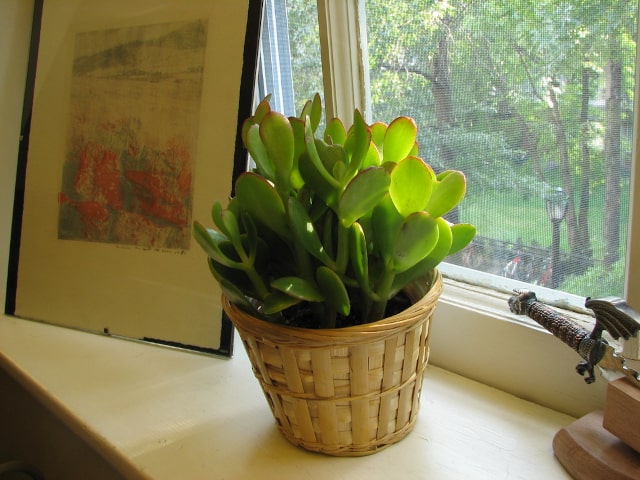
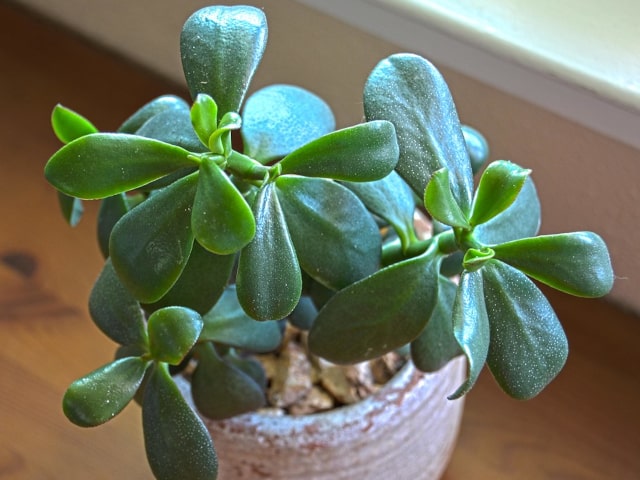
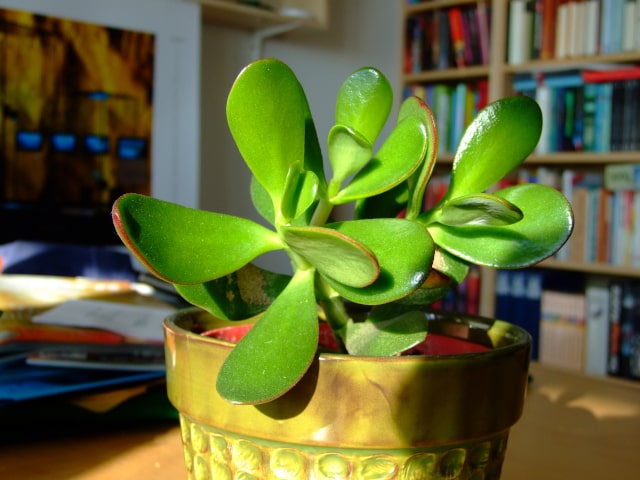
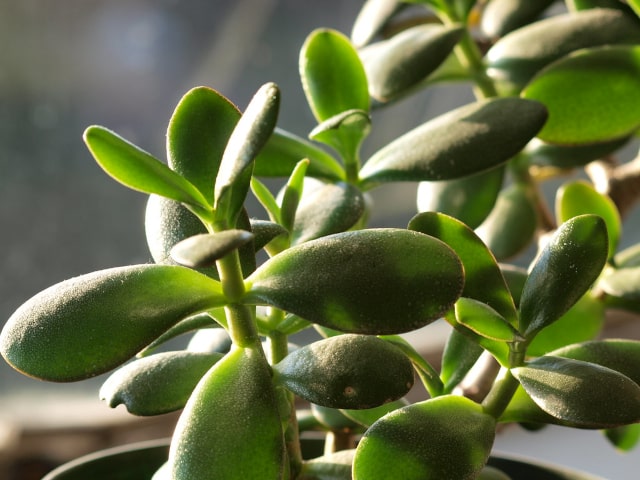
2 Comments
Thank you, please need some advice about best time of propagate.